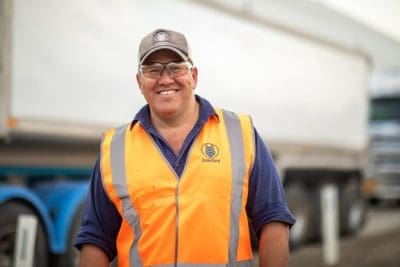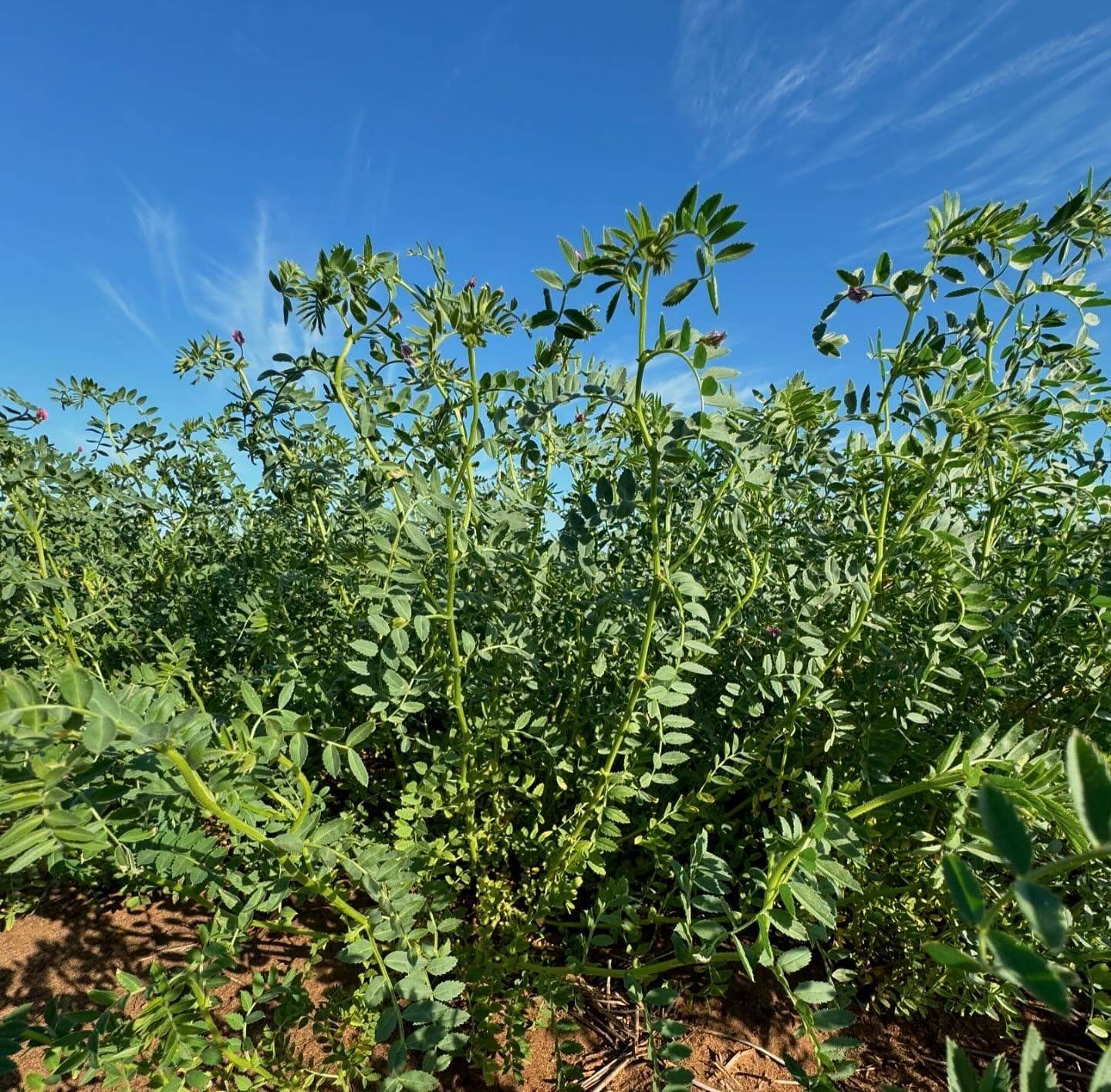A chickpea crop show above-average yield potential north of Moree as it starts to flower two weeks ago. Photo: FarmSimple, Croppa Creek
LIMITATIONS to road and rail capabilities are expected to push some chickpeas harvested in coming months in southern Queensland on to the Moree-Newcastle rail path.
The flow south bucks the normal metric of Brisbane being the Natural Terminal Port for grain and cotton produced across southern Queensland, and north of Moree, 100km south of the New South Wales-Qld border.
With the start of Australia’s bumper chickpea harvest only weeks away for southern Queensland and northern New South Wales, the prediction has come from GrainCorp head of supply chain Josh Connell.
His view is supported by others, including AgForce grains president Brendan Taylor, who are well aware of the pressure a Qld and NSW chickpea harvest forecast at 1.3 million tonnes will put on the local supply chain.
Ramping up that pressure is the scheduled end in late March of the no-tariff period to India, which has returned as a volume buyer for the first time since 2018.

GrainCorp supply chain manager Josh Connell.
All can see an undersupply of rail assets in southern Qld, plus standard restrictions on larger road-trailer combinations and rail paths through Brisbane, as likely to push some Qld volume into Moree, NSW’s northernmost rail head.
“Rail freight in NSW is not as constrained as it is in Queensland,” Mr Connell said.
“If Queensland can’t get itself sorted…we might see some of those border areas go south.”
With its 48-hour cycle time for trains running to Newcastle, Mr Connell said Moree was the obvious place to accumulate chickpeas from the western Downs and border areas, as well as north-west NSW, for the rail journey to port.
“Further than that, and there are lighter axle loads and longer timeframes.”
Mr Connell said traders who can get their product “to the right railhead and to the port” will be able to capitalise on the current market.
Chickpea prices are sitting at $1000/t or more delivered site, very roughly triple what the much higher-yielding wheat is priced at, and the buoyant market points to the winter pulse being the grower’s cash crop of choice this harvest.
Rail limited in Qld
Watco holds the GrainCorp contract in Qld, and moved its first load of chickpeas for the bulk handler in 2019.
That was from Mt McLaren in Central Qld to GrainCorp’s Mackay terminal, and Watco has since shifted many trains full of chickpeas, mostly to Mackay, and GrainCorp’s other CQ port at Gladstone.
Following a collision in May at Goodar, west of Goondiwindi, Watco is down one grain train, and sources have said Aurizon, which hauls for other bulk handlers in Qld, has redeployed some of its rakes to other areas.
Aurizon was not able to say how many grain rakes were available this harvest in Qld, but a spokesperson for the company said it was continuing to discuss opportunities with a range of customers in Queensland’s grain industry.
With Qld’s harvest being the most variable of all states, those within the rail industry are not surprised rail operators do not have a surplus of rolling stock available to put under a bumper crop when it turns up.
“With the lack of rail assets, there’s a major focus on road,” Mr Connell said.
Following a workshop hosted last month by the Qld Transport and Logistics Council, applications have been made to Qld’s Department of Transport and Main Roads to permit larger-than-normal trailer configurations to access Brisbane sites.
These include both export terminals on the south shore of the Brisbane River, GrainCorp’s Fisherman Islands and Wilmar’s Qld Bulk Terminals, and two on the north shore, the public wharf at Pinkenba and the nearby Wagner’s wharf.
While GrainCorp is expecting to use rail to get some chickpeas to its FI terminal, the only one in Brisbane that can take trains, Mr Connell said the need for road transport, and plenty of it, is at front of mind.
“We need to find a way for more grower-direct deliveries.”
“The more combinations that are able to run to port, be it for containers or bulk, the more industry has the ability to benefit from a very short window.
“If it’s not on the water by February…who knows where the market is going to be.
“I think everyone’s well aware of current timelines for the Indian tariff.
“The biggest thing is the pure volume of the crop, the limitations on freight and the short time to move it out.”
Not all gloom on containers
Container freight rates to South Asia are generally seen as prohibitively expensive, and 20-foot food-grade containers are in short supply.
Coupled with the exact timing of the chickpea harvest unknown for southern Qld and northern NSW, only the most confident traders are looking at booking container business.
They include Fletcher International managing director Roger Fletcher, whose company runs four container trains a week into Sydney, carrying sheepmeat from its Dubbo works, plus commodities grown on the company’s own and other farms.
“We’re doing chickpeas best way we can, and that’s in containers,” Mr Fletcher said.
Grain Central: Get our free news straight to your inbox – Click here

